Ramen
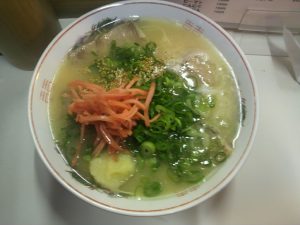
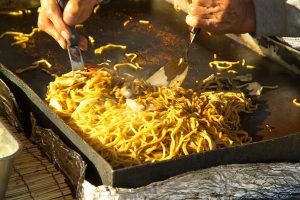
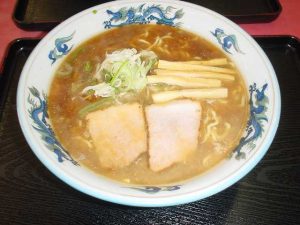
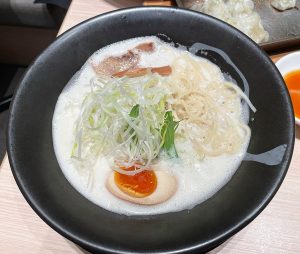
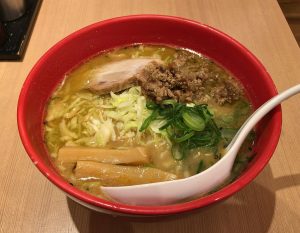
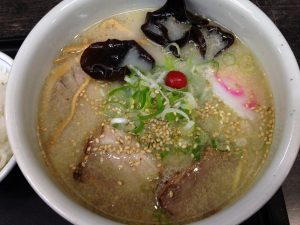
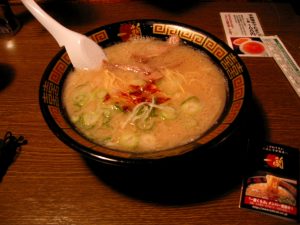
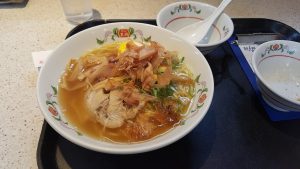
Flavors
Shōyu (醤油, “soy sauce”) ramen has a clear brown broth, based on a chicken and vegetable (or sometimes fish or beef) stock with plenty of soy sauce added resulting in a soup that is tangy, salty, and savory yet still fairly light on the palate. Shōyu ramen usually has curly noodles rather than straight ones, although this is not always the case. It is often adorned with marinated bamboo shoots or menma, scallions, ninjin (carrot), kamaboko (fish cakes), nori (seaweed), boiled eggs, bean sprouts or black pepper; occasionally the soup will also contain chili oil or Chinese spices, and some shops serve sliced beef instead of the usual chāshū.
Shio (塩,”salt”) ramen is the oldest of the four types. It has a pale, clear, yellowish broth made with plenty of salt and any combination of chicken, vegetables, fish, and seaweed. Occasionally pork bones are also used, but they are not boiled as long as they are for tonkotsu ramen, so the soup remains light and clear. Chāshū is sometimes swapped for lean chicken meatballs, and pickled plums and kamaboko are popular toppings as well. Noodle texture and thickness varies among shio ramen, but they are usually straight rather than curly. “Hakodate Ramen” is a well-known version of shio ramen in Japan.
Miso (味噌) ramen is a relative newcomer, having reached national prominence around 1965. This uniquely Japanese ramen, which was developed in Sapporo Hokkaido, features a broth that combines copious miso and is blended with oily chicken or fish broth – and sometimes with tonkotsu or lard – to create a thick, nutty, slightly sweet and very hearty soup. The noodles are typically thick, curly, and slightly chewy.
Karē (カレー,”curry”) ramen, ramen cooked with curry soup. Curry soup is mainly made with pork bones and vegetables and is seasoned with curry. The noodles are thick and curly. Toppings include chāshū, wakame, and bean sprouts.

